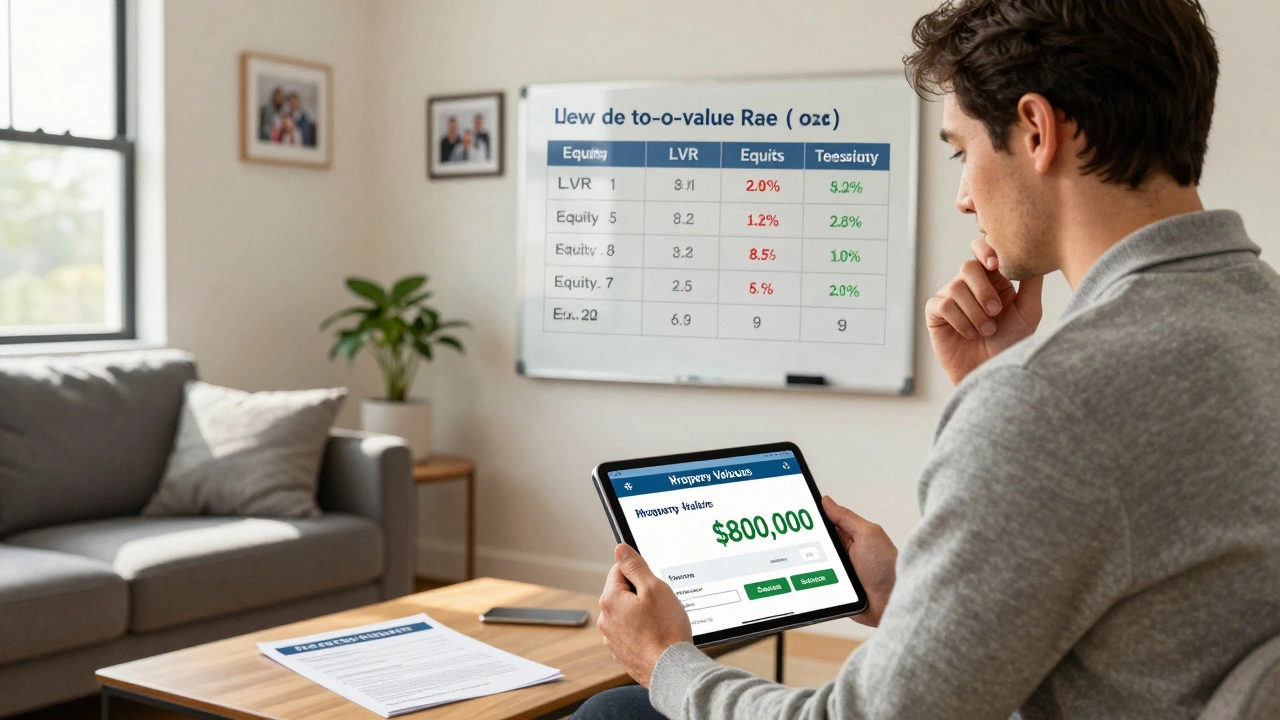Remortgaging is more than just a buzzword you hear tossed around by homeowners. It might sound like a daunting financial maneuver, but at its core, it's simply swapping your current mortgage deal for another, often with another lender. While many opt for remortgaging to secure a more favorable interest rate, others see it as a golden opportunity to unlock the hidden treasure in their homes—the equity.
Accessing a lump sum through remortgaging revolves around the idea of borrowing more than you currently owe. This additional borrowing taps into your property's value, which has likely grown over the years. Think of it as a chance to put your home's investment potential to work, whether for renovating, paying debts, or investing in new ventures.
Before plunging into the remortgaging waters, it's crucial to weigh the benefits against potential pitfalls like higher monthly payments. Understanding the nuances of this process ensures that the financial leap you're considering is both smart and sustainable. Let's delve deeper into how remortgaging can serve as a tool for accessing lump sums and what you need to navigate this complex yet rewarding landscape.
- Understanding Remortgaging Basics
- How Lump Sums Work in Remortgaging
- Benefits and Risks of Taking a Lump Sum
- Practical Tips for Successful Remortgaging
Understanding Remortgaging Basics
Remortgaging often arises as a solution when homeowners find themselves wanting to renegotiate the terms of their mortgage to better fit their needs. It's essentially the process of switching from one mortgage deal to another, either with the existing lender or with an entirely new one. People might decide to remortgage for a variety of reasons, ranging from saving money on monthly payments to unlocking extra funds through equity. Let's go on a deeper dive into why this process has become a popular choice for many.
One major motivation behind remortgaging is the desire to secure a lower interest rate. When interest rates fall, homeowners naturally look for opportunities to decrease their monthly payments and save money over the life of the loan. For example, if you initially locked in a rate during a less favorable economic period, remortgaging gives you the chance to take advantage of better deals. Many find that even a minor reduction in interest rates can result in significant financial savings. There are also those who choose to remortgage to fund major expenses, like a home renovation, by taking out a larger loan than the balance on the current mortgage.
Another significant aspect to consider is the change in the property's value since the original purchase. Over time, property values tend to increase, which means homeowners could potentially access a larger chunk of equity. This increase in value can open doors to more favorable borrowing terms, offering more flexibility with future financial plans. However, it's worth noting that tapping into your property’s equity also comes with its own risks, such as increasing the amount you owe or adjusting monthly payments upward if not managed wisely. As renowned finance expert, Martin Lewis, often says,
"Taking control of your mortgage means taking control of your future financial health."
Remortgaging isn't just about lowering costs or freeing up cash. For some, it's a strategic move to secure a fixed-rate deal right before rates are predicted to rise, providing certainty over their monthly outgoings. Others might use a remortgage to consolidate debt, bundling their personal debts into the new home loan to simplify payments. This option, while practical, requires careful consideration as blending different debts can have long-term implications on total interest paid.
Engaging in the remortgaging process does rarely have upfront costs like legal fees, valuation fees, or early repayment charges, especially if exiting a mortgage prematurely. These costs might be worth scrutinizing against the potential savings or money raised to ensure the move adds up financially. The ultimate goal, of course, is to ensure you're moving toward a more advantageous position.
| Reason to Remortgage | Potential Benefit |
|---|---|
| Lower Interest Rates | Decrease in monthly payments |
| Access Equity | Funds for investments or expenses |
| Debt Consolidation | Simplified payments |
| Switch to Fixed Rates | Payment stability |
In the realm of finance, understanding the basics of remortgaging can lead to smarter decisions that bolster personal economic health. It's not merely a transactional procedure but a strategic financial exercise that, when undertaken with clarity and purpose, can significantly impact one's financial trajectory. Knowing your goals and the tools available is fundamental before navigating this path, ensuring that each step taken aligns with securing a more prosperous future.

How Lump Sums Work in Remortgaging
Delving into the world of remortgaging opens up a realm of possibilities, especially when it comes to accessing a lump sum from the equity built up in your property. Imagine having the key to a safe of untapped potential, right within the four walls of your home. It's like having a financial buffer that you might not have realized you had, just waiting to be utilized. So, how exactly does this work? When you remortgage, you essentially take out a new mortgage to replace your existing one, possibly with a different lender. If your home's value has increased or your existing loan has decreased, this difference is your equity.
Now, here's the intriguing part. By remortgaging, you can request to borrow a higher amount than the balance remaining on your current mortgage. The difference between the new loan and your current mortgage can be taken out as a lump sum. This isn't free money, though. It's essentially your own money coming back to you, provided against the value of your home. It’s like cashing out on the investment your property has become over the years. This single payment could be used for a variety of purposes: maybe it's high time for some home improvements, or perhaps consolidating debts is the priority.
You'll want to keep in mind that accessing a lump sum means your mortgage balance will be higher, potentially leading to higher monthly payments. For instance, if you owe $150,000 on your current mortgage but your property's value has swelled to $250,000, that leaves $100,000 as potential equity. Opting for a remortgage of $180,000, for example, means you'll effectively get a lump sum of $30,000 (subtracting original mortgage). This example illuminates how remortgaging isn't simply about lowering interest rates but can also be a strategic financial decision.
"A remortgage with a cash release can be a smart way to improve your home, your finances—or both, provided you weigh the costs and benefits carefully,” suggests a financial advisor at the UK's leading mortgage firm.
It's significant to consider the market conditions and your current financial status. Some homeowners might find it an excellent opportunity to add value to their home by upgrading kitchens, adding extensions, or even energy-efficient modifications. These improvements might yield a greater return when it eventually comes time to sell the property. Nevertheless, this strategy isn’t without its share of cautions. If property values fall or if you're not able to cover the increased mortgage payments, the financial risk can be substantial. Hence, understanding one's financial capabilities and future plans is vital when weighing the benefits of integrating these funds into the mortgage.
To give you a clearer picture, here's a quick comparison of potential scenarios:
| Scenario | Exisiting Mortgage | New Mortgage | Lump Sum |
|---|---|---|---|
| Original House Value | $200,000 | $250,000 | $50,000 |
| Increased House Value | $150,000 | $200,000 | $50,000 |
| Debt Consolidation | $100,000 | $150,000 | $50,000 |
When arriving at the decision to release equity from your home, expert advice should always be sought. It’s about balancing the act between leveraging your assets and ensuring peace of financial mind ahead. Armed with the right understanding and a carefully strategized plan, a lump sum through remortgaging could indeed be the key to unlocking your home's hidden potential.

Benefits and Risks of Taking a Lump Sum
Tapping into the equity of your home through a lump sum from remortgaging can indeed be beneficial, but it's essential to tread carefully. One of the main attractions is that it unlocks the value tied up in your property without the immediate pressure of needing to sell your beloved home. With potentially significant amounts at your disposal, you could funnel money into home renovations, clearing debts, or even investing in new ventures that might yield a high return. Moreover, with interest rates often more favorable compared with unsecured loans, a larger remortgage could mean cheaper borrowing.
While these benefits can seem alluring, climbing onto the remortgaging ladder is not without its share of risks. Increasing your mortgage means your monthly payments could swell, potentially squeezing your finances. This is particularly concerning if interest rates rise, leading to an uncomfortable hike in repayment obligations. Another danger is the slippery slope of property devaluation. Should house prices take a dive, you risk owing more than your home is worth, which can complicate any future plans to move or refinance. As mortgage broker Kavitha Ramachandran once said,
"Homeowners must understand that borrowing against their property is not a quick fix to cash flow challenges.”
There's a strategic layer to consider when weighing the decision to access a lump sum. Each step must be accompanied by sound financial advice and a clear understanding of future repayment capacity. It's also wise to compare deals from different lenders, as tempting as it might be to stick with your current provider for convenience. Take into account any added fees associated with switching mortgages, as they can accumulate swiftly and affect what you ultimately gain from the transaction.
For those thinking of taking the plunge, weighing out a risk-benefit scenario is an excellent method to proceed. Potential beneficiaries must ask themselves how this additional borrowing will fit into their long-term plans. Will this lump sum be used sensibly for growth or improvement, or is it simply a temporary patch for financial pressure? More importantly, they need to consider if they have a strong enough financial cushion to handle unexpected changes in the financial landscape. This methodical approach ensures that a move to remortgage is a calculated, rather than impulsive, decision.

Practical Tips for Successful Remortgaging
Embarking on the journey of remortgaging can seem like scaling a financial peak. But with the right set of tools and knowledge, reaching the summit is both achievable and rewarding. The road to a successful remortgage starts with understanding your property's current value. Knowing how much your home is worth is essential. It allows you to budget appropriately, ensuring you don't borrow more than you can pay back. The added equity your home has amassed over time can be a game-changer, turning potential into reality. Make sure you get an accurate valuation by consulting multiple sources, from online estimates to professional appraisals.
Knowing when to initiate the remortgaging process is just as crucial as knowing how. Timing can mean better interest rates and more favorable lender terms. Rates fluctuate based on economic conditions, so keeping fingers on the market's pulse is advantageous. A period of rising interest rates might lead to an urgency to switch, whereas a stable environment allows more deliberation. Having a solid understanding of market trends and general financial climates is indispensable. If uncertain, seeking advice from a financial adviser could offer clarity.
Then there’s the paperwork. Preparing to remortgage means diving into a sea of documentation. Gathering all essential documents, such as salary slips, bank statements, and proof of identification in advance, helps make the process smoother. Being organized not only reduces stress but also presents a more attractive profile to potential lenders. This diligence can be the differentiator that fast-tracks the approval process or secures that competitive interest rate.
Consider the Costs
One of the lesser-discussed aspects is the fees involved in the remortgaging process. Like hidden icebergs beneath a placid sea surface, these can catch unsuspecting sailors off guard. From arrangement fees to early repayment charges from an existing loan, understanding the cost implications is part of wise financial planning. Create a detailed breakdown of all potential costs to ensure no nasty surprises. Lenders might offer appealing no-fee remortgages, but they often come with a higher interest rate, something worth mulling over.
“Remortgaging isn't just about lowering your rate—it's a chance to re-evaluate your financial goals and align them with your life's current stage.” - Laura Lewin, Financial Expert
Moreover, don’t hesitate to shop around. The mortgage market is vast, with numerous lenders, each offering various service packages. Use mortgage comparison websites, but also consider personal consultations with mortgage advisors. They can offer further insight and help secure a deal tailored to your needs, possibly one that online calculators miss. With personal expenses considered, it's better to err on the side of caution and opt for security over risky deals.
Ultimately, arming yourself with knowledge, checking your financial health, and keeping an eye on market trends can combine to make a compelling case for a successful remortgage. Always remember: it's your home, your equity, and your financial future – crafting a strategy that best serves your needs is more than just financial sense, it's empowerment.







